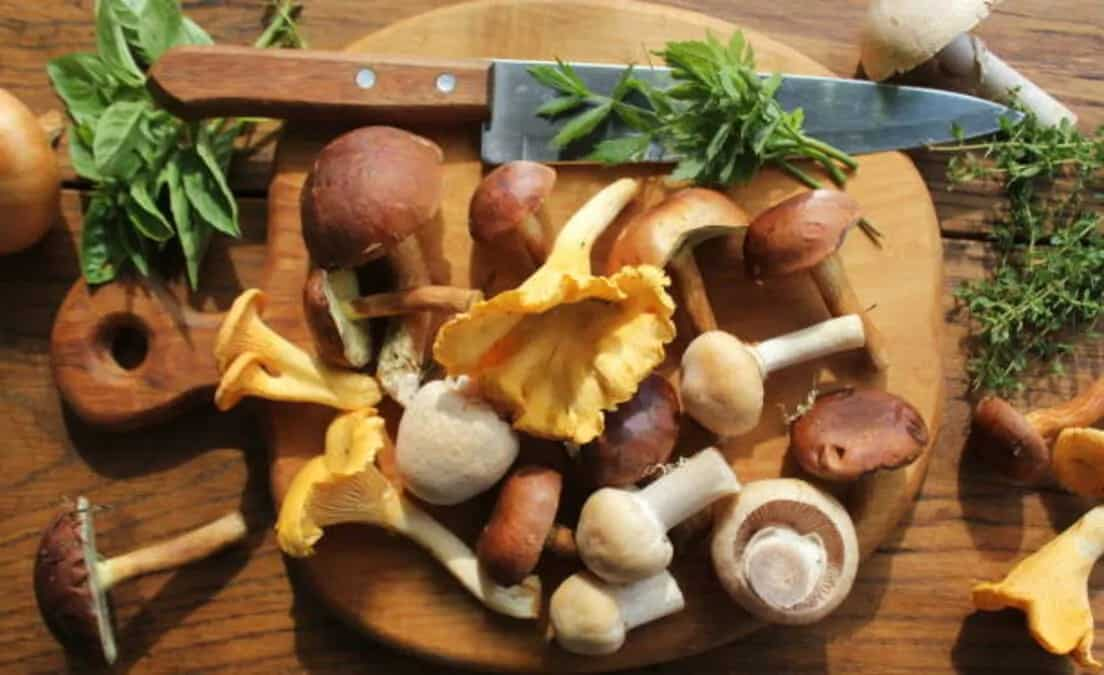Priya Das
Updated:Nov 30, 2023
In Indian cooking, mushrooms are very important because they give different dishes distinctive flavours, textures, and nutritional value. Due to their great versatility, mushrooms can be found in many Indian dishes such as kebabs, curries, stir-fries, and biryanis. They can take on the flavours of the herbs and spices used in different recipes thanks to their neutral taste. For those who are vegetarians or vegans, mushrooms are an excellent source of protein. They give food a meaty texture, which is why vegetarian and vegan recipes frequently use them. Because of their inherent umami flavour, mushrooms give food depth and richness. This makes many Indian recipes taste better overall, making for a savoury and fulfilling meal.


3. Enoki Mushrooms: Flammulina velutipes, or enoki mushrooms, are a unique culinary addition that have a mild, delicate flavour and a distinct appearance. They have small, delicate caps and long, slender white stems. The taste of enoki mushrooms is subtly sweet and refreshing with a slight crunch. The texture stays firm even when cooked briefly, adding a unique element to dishes. Enoki mushrooms are versatile and can be used in hot and cold dishes alike; they are frequently used in sushi, noodle dishes, and Asian hot pot (nabemono). They are a source of plant-based protein, so they are a good fit for vegetarian and vegan diets. Enoki mushrooms contain polysaccharides, which are thought to have potential immune-boosting properties and may have other health benefits.
4. Porcini Mushrooms: Boletus edulis, the scientific name for porcini mushrooms, are highly valued for their earthy, nutty, and rich flavour. They are a popular ingredient in many culinary traditions because of their strong flavour, which only gets better when cooked. Porcini mushrooms are popular in many recipes because of their meaty, dense texture in the cap and stem. The unique scent of porcini mushrooms enhances the dish’s overall sensory experience. Because of this, they are an essential component of meals that have flavour and aroma. Because of their versatility, porcini mushrooms can be used in many different culinary contexts. They give food a unique flavour and are frequently used in French, Italian, and other European cuisines.
Video Credit: Youtube/ Giallozafferano Italian Recipes
5. Morel Mushrooms: Morchella spp., or morel mushrooms, are highly valued for their distinct flavour. The flavour of morel mushrooms is earthy, rich, and has a noticeable nutty undertone. Their distinct and in-demand flavour is a result of the earthy and nutty combination. Morel mushrooms have a delicate, yet complex flavour. Morels are a favourite among foodies because, despite their potent flavour, they add a sophisticated and nuanced taste to dishes. A good source of vital nutrients, such as vitamins (like D and B vitamins), minerals (like iron and copper), and dietary fibre, are morel mushrooms. Their nutritional value enhances general health. Because they are comparatively low in fat and calories, morel mushrooms are a satisfying and healthful addition for anyone trying to watch their calorie intake.
6. Shimeji Mashrooms: The genus Hypsizygus includes shimeji mushrooms, which have a distinct, mild flavour with a hint of sweetness and nutty undertone. They are distinguished by their delicate, slender stems and firm, crisp texture. Shimeji mushrooms take on a pleasing bite when cooked, and their flavour intensifies. They also maintain their firmness. Depending on the variety, the tiny caps can be white, beige, or brown in colour. Because of their versatility, shimeji mushrooms work well in salads, noodle dishes, stir-fries, soups, and stews. They are delicious served as an accompaniment to entrées or as a side dish. Shimeji mushrooms’ firm, slightly crunchy texture creates a nice contrast with other ingredients in a dish. Even after cooking, they keep their structural integrity.
